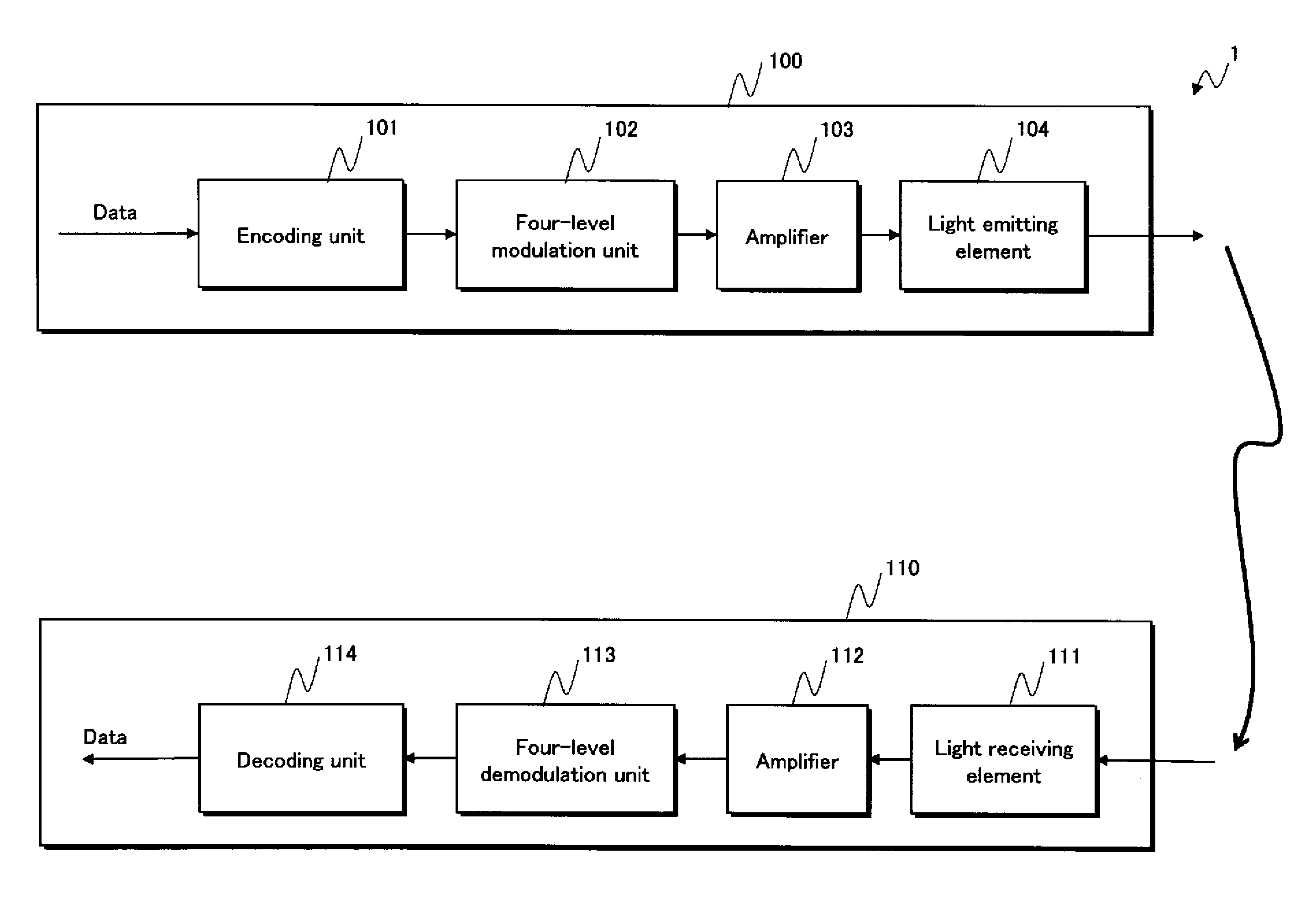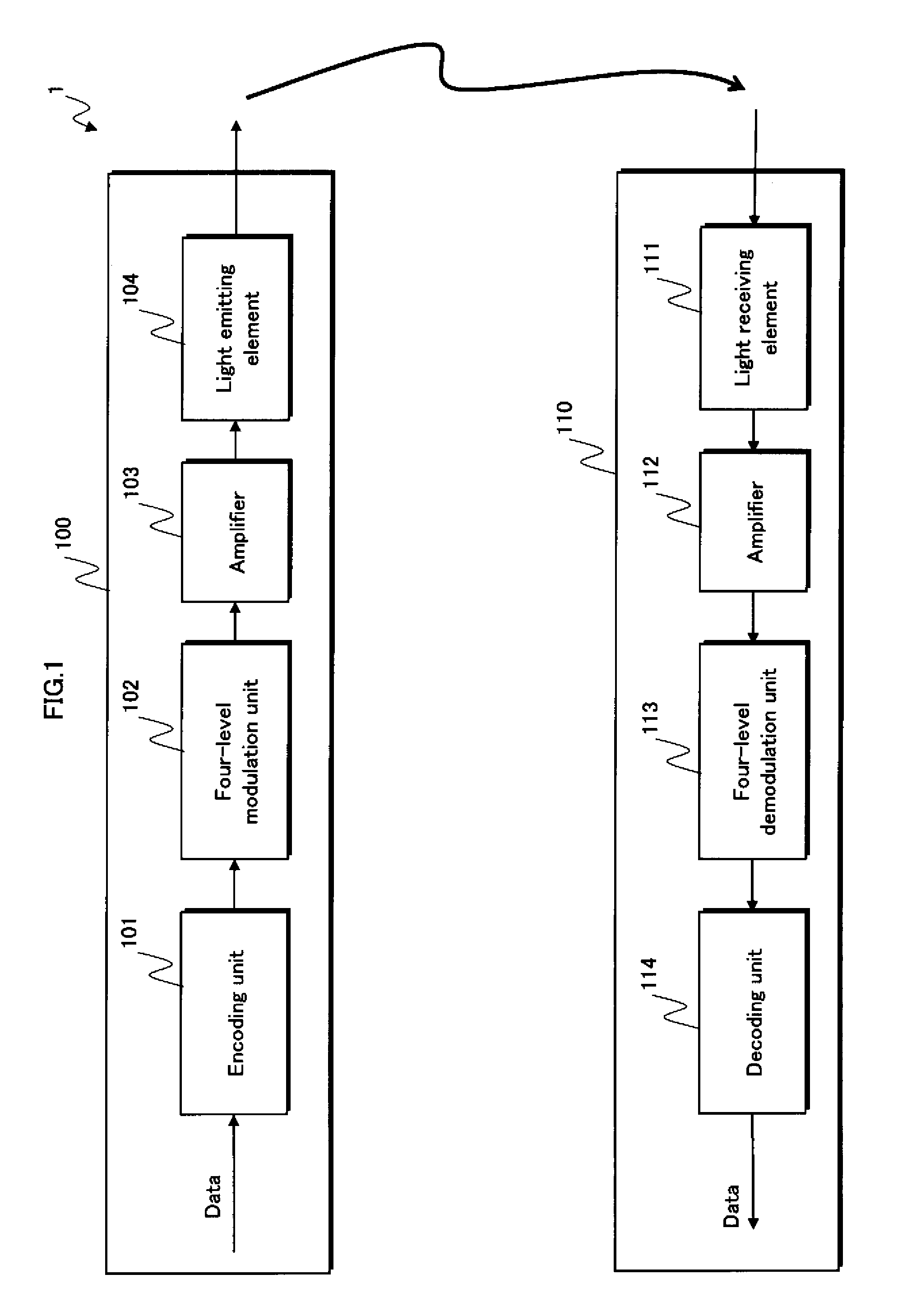Transmission device
- Summary
- Abstract
- Description
- Claims
- Application Information
AI Technical Summary
Benefits of technology
Problems solved by technology
Method used
Image
Examples
embodiment 1
1. Embodiment 1
[0082]The following describes Embodiment 1 of the present invention with reference to the figures.
1.1. Outline of Transmission / Reception System 1
[0083]The following is an outline of the transmission / reception system 1, which includes a transmission device according to the present invention.
[0084]As shown in FIG. 1, the transmission / reception system 1 is composed of a transmission device 100 and a reception device 110.
[0085]The transmission device 100 applies encoding and either two-level (2̂1) or four-level (2̂2) amplitude modulation to input data that is to be transmitted, thereafter transmitting the data to the reception device 110.
[0086]In Embodiment 1, four-level Amplitude Shift Keying (ASK) modulation is used for four-level amplitude modulation. FIG. 2 shows an example of mapping when using four-level ASK modulation. FIG. 2 shows voltage levels (V0, V1, V2, V3) and disparities (−3, −1, +1, +3) corresponding to input patterns (the values “00”, “01”, 10″, “11”). He...
embodiment 2
2. Embodiment 2
[0226]The following is an explanation of Embodiment 2 of the present invention with reference to the figures, focusing on the aspects that differ from Embodiment 1. Note that the same labels are used for structural elements that perform the same operations.
[0227]As shown in FIG. 11, the transmission / reception system 1a in Embodiment 2 is composed of a transmission device 100a and a reception device 110a.
[0228]As in Embodiment 1, in the following description, before the transmission device 100a actually transmits data that is to be transmitted, both devices transmit and receive, as an initialization process, data to establish communication. Also as in Embodiment 1, the reception device 110a transmits modulation designation data that designates either two-level or four-level amplitude modulation to the transmission device 100a. The transmission device 100a performs modulation on the data to be transmitted in accordance with the amplitude modulation designated by the am...
PUM
 Login to View More
Login to View More Abstract
Description
Claims
Application Information
 Login to View More
Login to View More - R&D
- Intellectual Property
- Life Sciences
- Materials
- Tech Scout
- Unparalleled Data Quality
- Higher Quality Content
- 60% Fewer Hallucinations
Browse by: Latest US Patents, China's latest patents, Technical Efficacy Thesaurus, Application Domain, Technology Topic, Popular Technical Reports.
© 2025 PatSnap. All rights reserved.Legal|Privacy policy|Modern Slavery Act Transparency Statement|Sitemap|About US| Contact US: help@patsnap.com



